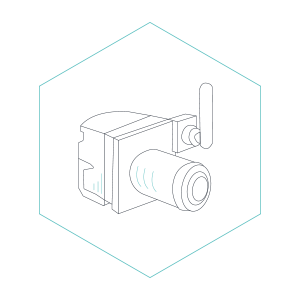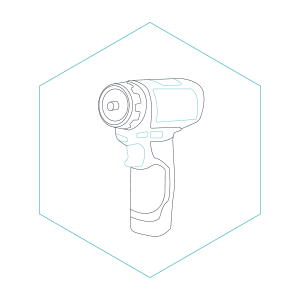SOIL KIT – COLD STORAGE (rest of world)
For use outside the UK and EU
(click here if sampling in the UK or EU)
- All kit users must familiarize themselves with data requirements set out in the Sample Manifest, prior to sampling.
- Please ensure all information sent to NatureMetrics is in English.
- Please note that this kit does not contain a sampling datasheet. Instead, ensure that you make notes of any relevant information in the field that will be required for the sample manifest.
- Kits should be used within one year.
Temperature considerations:
Packing and transport guidance must be followed very closely for this kit to minimize the chances of analysis results being influenced by temperature changes during transport.
To ensure that samples have not been compromised by temperature changes during transport, the maximum accepted temperature on arrival to our lab is 10°C.
Important: You must use an ultra-low temperature industrial-grade freezer (-45°C to -86°C). If you do not have access to an ultra-low temperature freezer, you will need to use our preservative buffer kit instead.
Kit contents

1x pair of nitrile gloves
1 x corer with plunger
1 x barcoded snap lock bag
1 x specimen safety bag
1 x disinfectant wipe
Vampire Pump

1 x pump head (A)

1 x drive unit (B)
YOU WILL NEED
- Device to capture GPS coordinates (lat / long) (e.g. GPS capable smartphone or standalone GPS device)
- Permanent marker (for labelling the sample bags)
- Rubber mallet (to help take the core samples – if the ground is hard)
- Cool box/bag with ice packs (for keeping samples cool while in the field)
- Trowel / small hand shovel (optional)
- An ultra-low temperature (-45°C to -86°C) industrial-grade freezer (to prepare samples for shipment)
PRE-SAMPLING
THINGS TO KEEP IN MIND WHEN SAMPLING SOILS:
To obtain a better representation of the soil community, it is important to combine four subsamples into one composite sample. Each core, as extracted by a 10mL corer, represents a single subsample. Thus, 4 x 10mL subsamples (approximately 40g in total) will comprise a full sample. We cannot accept samples larger than 50g – do not exceed x4 soil cores per sample.
Important:
- One soil sample = x4 full cores (the corer in the kit is used to collect each core).
Use a new kit for each new sample. This kit is designed to take one composite sample (not exceeding 50g) consisting of multiple subsample cores.
Avoid contamination. Only open one kit at a time. Gloves should be changed between each composite sample/kit. Avoid sampling directly underfoot; DNA from your footwear may transfer from previously visited areas. If a mallet or any other reusable tools are used, they should be decontaminated with the provided disinfectant wipe between each composite sample. Gloves should be worn when handling the disinfectant wipe.
Use corer with caution in gravelly or rocky soils. Corers will break with hard contact on stones or rocks. In these conditions, it is best to push the core in slowly; gentle taps with the mallet to drive the corer into the soils will allow you to feel hard obstructions. Alternatively, a metal corer may be a better option if such conditions are widespread across your site.
Corer may not achieve suction in waterlogged or dry, coarse soil. If soil core won’t come up with the corer, push the core to the desired depth then carefully lever the corer and its core out of the ground with a trowel.
More than one person using the kit? Please purchase extra gloves.
To minimize waste we provide one pair of gloves per kit. If two or more people will be handling the contents of the kit and collecting an eDNA sample, you will need to purchase additional pairs of gloves – enough for one pair of gloves for each individual handling the kit. We recommend purchasing medical-grade nitrile gloves.
TIPS FOR GETTING THE BEST RESULTS
Avoiding Inconclusive Results:
To get the best results possible, to avoid inconclusive results, and to avoid situations where data cannot be reported from a sample, please read our HOW TO AVOID INCONCLUSIVE RESULTS guide before undertaking fieldwork.
In summary, when inconclusive results occur, it is because the target DNA was not detected, DNA was degraded, or PCR (a crucial part of the lab process) was inhibited.
Key steps you can take to help avoid inconclusive results: do not leave your samples exposed to sunlight or heat, and return samples to NatureMetrics as soon as possible after sampling.
Avoiding contamination:
To increase confidence in results, avoiding contamination of samples is highly important. Sealed kits are sterile until opened; do not open more than one kit bag at a time, keep kit contents inside the bag before use, and put on the provided gloves before touching other kit components. Whilst wearing gloves, avoid touching anything not necessary to sample collection to minimize introducing external DNA into the sample. Change gloves between each kit. If any reusable tools are used, these should be decontaminated, using a disinfectant wipe or a bleach solution, between each sample.
PROTOCOL
1. Define your intended sampling area and mark out if necessary.
2. Using a permanent marker, label the clear snap lock sample bag containing the corer with your unique sample ID.
3. Put on provided gloves to minimize cross contamination and introducing your own DNA into the sample. Use the provided disinfectant wipe to wipe down mallet or trowel if used.
4. Remove the corer from the bag and keep hold of the bag because your sample will go into this.


5. Remove debris or litter from the surface where you intend to collect the core. This can be done with a gloved hand. If there is vegetation growing at the surface, gently push aside to minimize the amount captured by the corer.
6. Remove the plunger from the corer and push the core tube into the soil while twisting until the core is pushed in up to the 10 mL mark. It is recommended to use a rubber mallet to gently tap the corer into the ground to minimize pressure on your hand. If the core will not push in all the way, remove and clear the core then try again in a different spot nearby. If soils are too hard and dry for coring, you can use a trowel or spade to break up the soil first. If soil core won’t come up with the corer, push the core to the desired depth then carefully lever the corer and its core out of the ground with a trowel.


7. Insert the plunger into the core to provide suction then pull the core out of the ground.
8. Position the corer over your labelled snap lock bag and push the plunger all the way down to expel the entire core into the bag. Seal or fold over the top of the bag between collecting subsamples to prevent contamination of the sample.


9. Repeat steps 5-8 at different locations within the sample area, using the same corer, until you have collected four subsamples. x4 cores = x1 sample. Do not exceed four cores.
10. When all the subsamples have been collected in the bag, mix the cores together within the bag to homogenise. This can be done by “massaging” the outside of the bag with your hands and some careful shaking. Break up clumps of soil between your fingers.


11. Once homogenised, push/shake the sample to the bottom of the bag, roll the bag around the sample to expel excess air from the bag, and then seal.
12. Complete the sample manifest, which was attached to the email confirming shipping of your kits. Make sure that the unique sample IDs entered into the sample manifest exactly match what you have written on the sample bag.
Upload your sample manifest using our Customer Service Desk.


13. Sample bags should be placed in a cool box/bag with ice packs while in the field. Courier collection should be arranged as soon as possible after sampling. Samples must be frozen prior to shipping to prolong the time for which they will stay cool during transport.
14. It is important that these samples are packed and shipped in accordance with our Soils Packing and Transport Instructions to ensure clearance through UK customs. Each sample bag will need to be sealed within a safety specimen bag prior to shipping. Ensure the sample bag and the specimen safety bag are wiped clean. Further instructions on how to use these bags are contained in that document and a demonstration video is available here.
You will be provided with a cold-storage box, in which to return your samples to us.
- Freeze the gel packs provided in an ultra-low temperature industrial-grade freezer (-45°C to -86°C) for 72 hours, to ensure that the gel packs reach the minimum required temperature of -20°C prior to shipment. If access to an ultra-low temperature freezer is not possible, we recommend using our preservative buffer kits instead.
- Load the samples and gel-packs into the provided cool box as close as possible to the shipment time to prolong the gel packs effectiveness. In all cases gel packs must be packed on the day of courier collection.
- Watch this short video to see how the international cold storage box is packed.
For sample returns, visit our customer support desk here. Use the Logistics Request form to upload your completed sample manifest and book your sample return. NatureMetrics is fully compliant with current legislation on the transport of biological material and our operations team are on hand to ensure that all return shipments meet the required specification. We are only able to analyze samples that are returned using the correct NatureMetrics logistics procedure.
Disclaimer: Safe sample collection is the responsibility of the Client. NatureMetrics accepts no liability associated with the use of the kits and sample collection. The Client is solely responsible for the quality of the samples and the representativeness of the samples received by NatureMetrics. The information contained within the Final Report provided by NatureMetrics to the Client is not intended to be advisory, it is informational. Interpretation and decisions are the sole responsibility of the Client. NatureMetrics does not accept any liability whatsoever for any reliance placed on any information contained within, or any use that may be made of, the Final Report by the Client. Please read the full limitation of liability statement in the Terms and Conditions.
